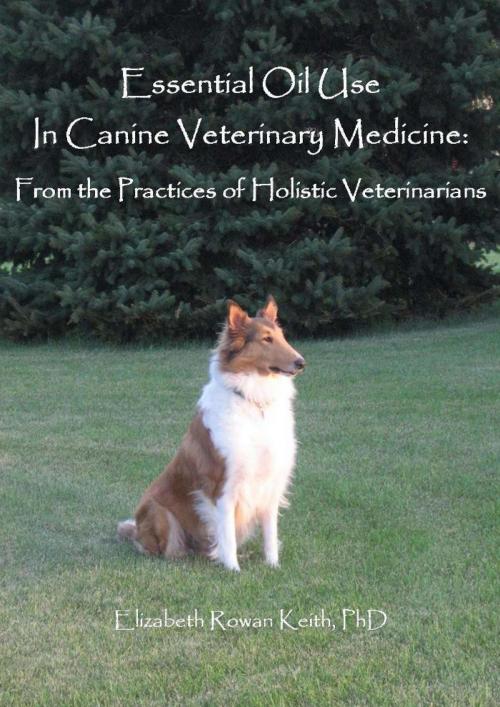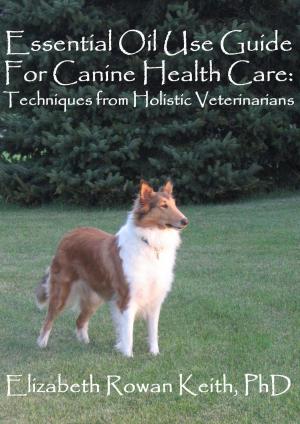Essential Oil Use in Canine Veterinary Medicine: From the Practices of Holistic Veterinarians
Nonfiction, Health & Well Being, Medical, Veterinary Medicine, Food Animal, Alternative & Holistic Medicine, Alternative Medicine| Author: | Elizabeth Rowan Keith | ISBN: | 9781465870957 |
| Publisher: | Elizabeth Rowan Keith | Publication: | September 16, 2011 |
| Imprint: | Smashwords Edition | Language: | English |
| Author: | Elizabeth Rowan Keith |
| ISBN: | 9781465870957 |
| Publisher: | Elizabeth Rowan Keith |
| Publication: | September 16, 2011 |
| Imprint: | Smashwords Edition |
| Language: | English |
This book comes from more than three years of doctoral research on essential oils, and their use in canine veterinary medicine. In this book hundreds of holistic veterinarians practicing across the United States describe their use of essential oils in treating dogs. Surveys and interview data are used to develop a comprehensive understanding of the specifics in clinical application of essential oils to promote healing and to maintain wellness in canine patients.
The purpose of this research is to assess and relate essential oil use with canine patients in veterinary practices within the United States. In order to develop the most comprehensive understanding possible, a qualitative, ethnographic style of research was employed to assess the scope, methods, purpose, and philosophy of essential oil use with canine patients among holistic veterinarians thoughout the United States.
In the summer of 2009, members of the American Holistic Veterinary Medical Association (AHVMA) were asked to complete and return a survey on their essential oil use with canine patients. Utilizing data from a 34.47% response rate, essential oil use by survey respondents was organized in a clinically useful manner to describe the essential oils used by responding AHVMA members and for what purposes. Information sources for essential oil topics were also collected and categorized. In all, 52 individual essential oils and 128 commercially prepared therapeutic blends were reported in use by survey respondents. Treatments with essential oils range across a wide spectrum of mind, body, and spirit conditions and include aromatic, topical, and internal applications. An essential oil protocol may be individual in application or may be included within multiple modalities in canine veterinary medicine.
To develop a deeper understanding of essential oil use in veterinary practices throughout the United States, fifteen members of the AHVMA were interviewed in depth regarding their methods, decisions, and experiences relating to essential oil use with canine patients. Treatments, administrative protocols, and case summaries are included.
Twenty-two holistic veterinarians were interviewed regarding their views on the future of essential oil use in veterinary medicine. Their visions of the future vary. The most likely developments in therapeutic applications of essential oils were discussed, as well as present undiscovered potential for beneficial use. Present and possible influences and scenarios involving essential oil use in veterinary practice have been developed by the veterinarians interviewed.
This book comes from more than three years of doctoral research on essential oils, and their use in canine veterinary medicine. In this book hundreds of holistic veterinarians practicing across the United States describe their use of essential oils in treating dogs. Surveys and interview data are used to develop a comprehensive understanding of the specifics in clinical application of essential oils to promote healing and to maintain wellness in canine patients.
The purpose of this research is to assess and relate essential oil use with canine patients in veterinary practices within the United States. In order to develop the most comprehensive understanding possible, a qualitative, ethnographic style of research was employed to assess the scope, methods, purpose, and philosophy of essential oil use with canine patients among holistic veterinarians thoughout the United States.
In the summer of 2009, members of the American Holistic Veterinary Medical Association (AHVMA) were asked to complete and return a survey on their essential oil use with canine patients. Utilizing data from a 34.47% response rate, essential oil use by survey respondents was organized in a clinically useful manner to describe the essential oils used by responding AHVMA members and for what purposes. Information sources for essential oil topics were also collected and categorized. In all, 52 individual essential oils and 128 commercially prepared therapeutic blends were reported in use by survey respondents. Treatments with essential oils range across a wide spectrum of mind, body, and spirit conditions and include aromatic, topical, and internal applications. An essential oil protocol may be individual in application or may be included within multiple modalities in canine veterinary medicine.
To develop a deeper understanding of essential oil use in veterinary practices throughout the United States, fifteen members of the AHVMA were interviewed in depth regarding their methods, decisions, and experiences relating to essential oil use with canine patients. Treatments, administrative protocols, and case summaries are included.
Twenty-two holistic veterinarians were interviewed regarding their views on the future of essential oil use in veterinary medicine. Their visions of the future vary. The most likely developments in therapeutic applications of essential oils were discussed, as well as present undiscovered potential for beneficial use. Present and possible influences and scenarios involving essential oil use in veterinary practice have been developed by the veterinarians interviewed.















